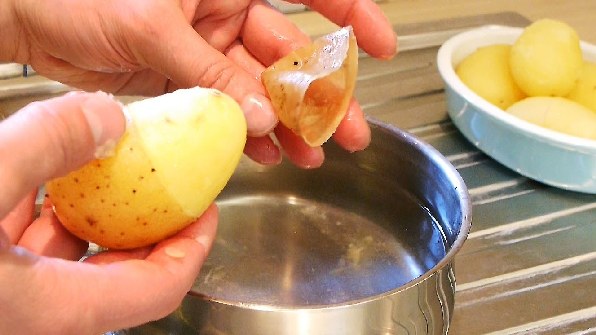 It is difficult to find in the Slavic countries a person who has not tried potatoes. This vegetable is the main dish in almost every family. It is prepared on weekdays and on holidays, it is planted in the spring in almost every garden and purchased for the winter.
It is difficult to find in the Slavic countries a person who has not tried potatoes. This vegetable is the main dish in almost every family. It is prepared on weekdays and on holidays, it is planted in the spring in almost every garden and purchased for the winter.
Content
Description and characteristics of potatoes
Potato is an annual plant that is used in food. The crop plants grows in a bush on which there are 3-4 stems. Potato tubers are used in food, which in the bush from 5 to 15 or more. The culture is a heat-loving plant that does not tolerate frost. In order for tubers to form, a soil temperature of 15-19 degrees is needed. Potato is demanding on watering and soil composition.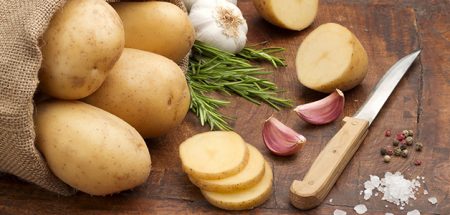
Cultivars according to the ripening speed are divided into the following groups:
- early
- medium early
- mid-season
- medium late
- late.
By use, the culture is divided into:
- dining room - which is used by people. Such varieties have good taste and a high degree of preservation;
- universal - used in food, as well as for technical purposes.
To get a good harvest, it is best to plant several varieties in order to have a vegetable with different tastes all year round.
Potato - good
This vegetable is not only quite nutritious, but also a healthy product. The main component of potatoes is starch. It also includes a large number of amino acids, minerals and vitamins. Fiber and Vitamin C also make this product quite essential for nutrition.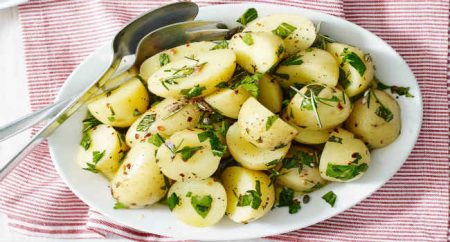
The huge benefits of potatoes are presented to people who suffer from metabolic disorders and lack of vitamins. The alkali, which is part of the vegetable, neutralizes acids, so it is useful for people with diseases such as arthritis, gout, and kidney failure.
To maximize the benefits of the vegetable, it must be boiled in a peel or baked in an oven.
Great benefit and raw potatoes, as well as its juice. Raw potatoes treat diseases of the gastrointestinal tract, erysipelas and fungal diseases, helps with eczema, coughing, relieves swelling and inflammation. In the stomach, potato juice can create a soft shell that heals ulcers, helps cope with gastritis and high acidity.
Potato - harm
The high starch content makes the product harmful to certain populations. It is worth restricting the intake of potatoes to those people who are prone to obesity, and also have a disease such as diabetes.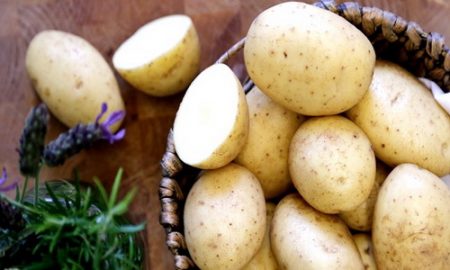
If you eat green tubers of culture, you can be poisoned. Since the green areas contain solanine, which is a poison for the human body. That potato, which lay until the spring, can cause malaise, as it forms the same solanine. Therefore, when preparing meals, it is recommended to clean as large a layer as possible, leaving the core in the food.
What determines the benefits and harms of potatoes
The benefits and harms of a vegetable may depend on its composition. The composition of the culture is constantly changing. It depends on the ripening time, as well as on the shelf life of this tuber.When potatoes have a balanced level of vitamin, sugars, trace elements and starch, then it is considered useful. If it has not matured or has been stored for a long time and solanine or chlorophyll has formed in it, then it passes into the category of harmful products. It is important that solanine and chlorophyll are not destroyed during the preparation of potatoes.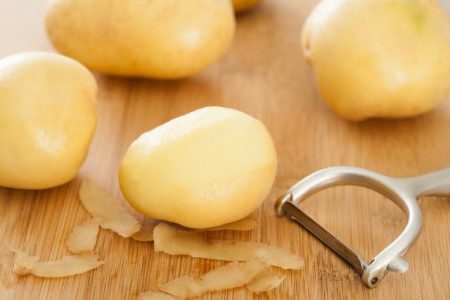
The method of preparation also affects the benefit or harm of potatoes. A boiled or baked vegetable in a peel without the use of oil is a useful product. If potatoes are fried in large quantities of oil, then it can no longer be called a useful product.
Potato composition
Starch, fiber, pectin, glucose, fructose, sucrose and vitamins are the main ingredients in potatoes. It contains acids and other chemical elements.
Of the vitamins in the vegetable includes:
- PP vitamins;
- beta carotene;
- Vitamin A;
- B vitamins
- Vitamin C
- Vitamin E
- vitamin H.
From macronutrients, potatoes include:
From trace elements in the vegetable includes:
- iron;
- zinc;
- iodine;
- copper;
- manganese;
- selenium;
- chromium;
- fluorine;
- molybdenum;
- boron;
- vanadium;
- cobalt;
- lithium;
- aluminum;
- nickel;
- rubidium.
Potato storage rules
To preserve the tubers intact, first of all, it is worth preparing potatoes. It is important to preserve it not only externally, but also preserve all its useful and palatability.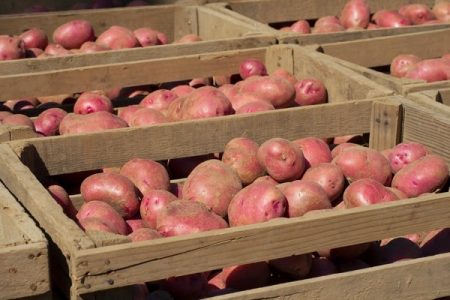
How to prepare potatoes for storage:
- to destroy all putrefactive and fungal bacteria it is worth drying the potatoes in the sun for several hours after they are dug from the ground;
- after drying, the vegetable needs to be shaken off the ground and sorted. You need to sort by size, purpose, degree of quality of the fruit, variety. Sick and infected fruits should be immediately postponed. It is also worth sorting the product that will be planted in the spring. It is important to remember that early varieties are not stored for a long time, and in the spring they will wrinkle and lose their taste, so they should be eaten first;
- sorted product must be laid out in boxes and put away in a cool, sunny place.
What conditions for storing vegetables should be created:
- in the room where the potatoes will be stored, the temperature must be maintained + 2 + 4 degrees. It is at this temperature that the vegetable will not freeze and will not start sprouting;
- the room should be ventilated with thermometers in order to take timely measures to change the temperature;
- the bottom of the store should be covered with sand, pebbles or rubble, which will absorb excess moisture;
- the premises should be isolated from rodents and other pests;
- it is worth disinfection in the store;
- several apples enclosed in boxes with potatoes will provide longer shelf life of tubers.
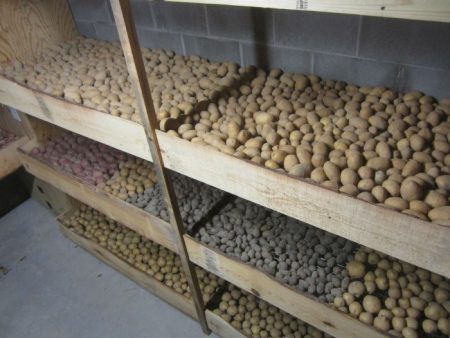
Where you can not store potatoes:
- Do not store the vegetable in a warehouse where the floors are cemented, linoleum or carpet is laid. Such a coating will accumulate moisture, and contribute to the multiplication of fungus and other putrefactive bacteria;
- a room without ventilation is also not suitable for storing potatoes;
- the presence of the sun is also a negative factor affecting the storage of potatoes;
- You can not store the vegetable in polyethylene, as it will not breathe;
- storage in the apartment is also not recommended, as the heat will allow the potatoes to germinate and age, as well as lose their taste.
Reviews
Experienced summer residents and farmers have long decided on the varieties of potatoes and say that the best varieties for growing and storage are:
- Red scarlet - perfectly stored, good presentation;
- Romano - delicious, crumbly;
- Laton is an early variety that gives a stable and good result, has good properties and high usefulness for the body;
- Gala - excellent taste and safety in the winter;
- Such varieties as Luck, Tuleevsky, Rosara, Bellarosa, Rocco, Adretta, Kamensky, Riviera, Picasso have also proven themselves on the market.




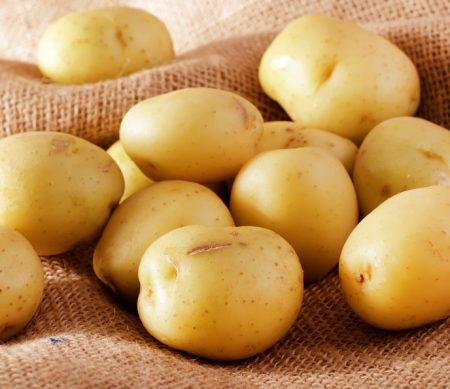
 Description and description of varieties in Belarus with a photo
Description and description of varieties in Belarus with a photo Do I need to pick flowers from potatoes: why do they do it
Do I need to pick flowers from potatoes: why do they do it When to dig potatoes: timing and availability of new potatoes
When to dig potatoes: timing and availability of new potatoes How to grow a good potato crop: various methods and methods, planting and care
How to grow a good potato crop: various methods and methods, planting and care